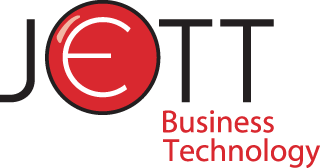Almost every day, someone on the JETT BT Team is engaged by a customer or potential customer with the following line of questioning: What Is ‘the Cloud’? What Does It Really Mean? Do I Need ‘The Cloud’?
Webster’s Dictionary defines Cloud Computing as “the practice of storing regularly used computer data on multiple servers that can be accessed through the Internet”. A fair definition, but a bit shallow in conveying the true depth of this mysterious IT wonder. If you’re looking for a more IT-centric technical definition, Wikipedia states “Cloud computing is an information technology (IT) paradigm that enables ubiquitous access to shared pools of configurable system resources and higher-level services that can be rapidly provisioned with minimal management effort, often over the Internet. Cloud computing relies on sharing of resources to achieve coherence and economies of scale, similar to a public utility”. A pretty ‘spot-on’ definition if you ask most IT folks.

From a small-medium business owner’s perspective, you should think of The Cloud as simply a vast assortment of services available to you through your Internet connection, per subscription. By paying a monthly fee, the small business owner can ‘rent’, those networking and computing capabilities that, in their usual state, would instead require devices to be installed and maintained inside the four walls of the business establishment. Devices currently most often replaced through Cloud subscriptions include file servers, email servers, remote access servers, and high-end PCs used as workstations. The most touted praise as to why this make sense and why ‘everyone should move to the cloud’ (said sarcastically in this writing) is that the business owner no longer endures the upfront cost of purchasing these systems, placing them in the office, and then coming out of pocket with the ongoing cost of operating and maintaining them. Instead, your subscription fee pays for the Cloud Provider to do that for you in their professionally equipped data center (huge building with nothing but servers and Internet connections, air conditioning, redundant power, backup generators …you get the picture).
Another popular feature of The Cloud is to subscribe to a specific software package you need for your business operation. Instead of buying that software and installing it on the servers or computers inside the four walls of your office, you can subscribe for the use of that software as it runs in The Cloud computing environment of that software company or other service provider. This is commonly known as Software as a Service (SAAS). A great example of that is Intuit’s provision of Quickbooks. It is a software package that you can subscribe to and use from your Internet connection. There are hundreds of thousands of software services available through The Cloud.
For certain needs in specific situations, it is absolutely common sense to go to The Cloud. A shining example of this is Microsoft’s O365 cloud-based email service. In the ‘old days’, small business owners had to invest in a Microsoft Exchange Server located inside their office in order to provide an industry standard, full featured email capability. Purchase, installation, and maintenance of this email system was (and is) a fairly significant upfront cost and ongoing investment. On the contrary, monthly O365 subscription fees ($5 per user for basic service) bring the business owner a full featured email capability with nearly global access and stellar reliability per minimal upfront cost and ongoing expense. For this reason, we haven’t installed an Exchange server system in a small business in quite some time now. We moved our own operation to the O365 Cloud Service some two years ago.
When hearing the argument, ‘You should go to The Cloud, everyone is doing it’, we advise that you just smile politely and nod your head and move on about your business. The Cloud is not the Holy Grail of business that saves everyone time and money every time. In many cases, moving to The Cloud can come with a long-term cost that will be significantly larger than what you would have spent had you put in the same capability inside your own four walls. Other points of contention around undesirable performance, loss of control, and poor support are also potential headaches once you’re flying in The Cloud. The fact is, just like with most anything, use of The Cloud in the right combinations for the right purpose can absolutely make sense for your business. The trick for the small business owner is in determining a strategy that has considered many factors. We will write more on those factors at some point soon, but for the time being, call us at (678) 387-5717 for expert guidance on cloud services in Atlanta.

